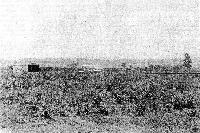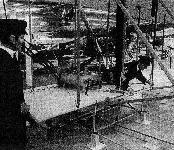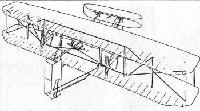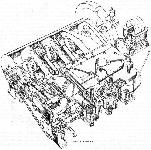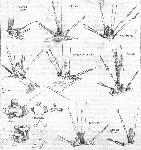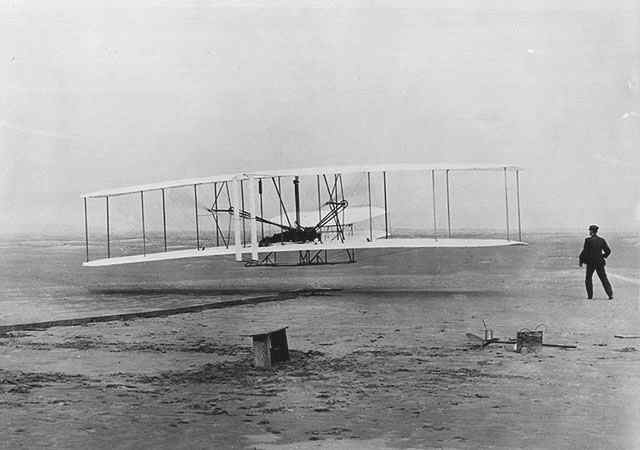
Описание
Страна: США
Год: 1903
Варианты
- Wright - Flier - 1903 - США
- Wright - Wright III / Wright A - 1905 - США
- A.Andrews. The Flying Machine: Its Evolution through the Ages (Putnam)
- Журнал Flight
-
Jane's All The World Aircraft 1913 /Jane's/
Unquestinably the most famous aviation photograph ever taken, this study shows the Flyer making the first of its four flights of 17 December 1903, with Orville piloting and Wilbur at the wingtip. Orville had set up the camera on its tripod, and the shutter was operated by John T Daniels of the Kill Devil Life Saving Station.
Orville Wright, the pilot in this historic picture, taken at 10.35am, Thursday, 17 December 1903, claimed this 12-second flight as ‘the first in the history of the world in which a machine carrying a man had raised itself by its own power into the air in full flight, had sailed forward without reduction of speed, and had finally landed at a point as high as that from which it started’. -
A.Andrews - The Flying Maschine: Its Evolution through the Ages /Putnam/
The Wrights’ powered aeroplane, Flyer No 1, with Wilbur Wright in the hipcradle, shows the chain drives, crossed on the left for counter-rotation, which reduced the pusher propeller speeds in relation to engine speed.
Wilbur in the 1903 Flyer after the abortive flight attempt of 14 December. Note the damaged front elevator supports. -
G.Loening - Takeoff into Greatness /Putnam/
The Kitty Hawk, the first successful flying machine, standing in front of Kill Devil Hill, North Carolina, December 1903.
-
P.Jarrett - Pioneer Aircraft: Early Aviation Before 1914 /Putnam/
The first powered Flyer outside the camp building on November 1903. The smaller shed was the one originally erected for the 1901 glider; the larger one was built in 1903 specially for the Flyer.
-
P.Jarrett - Pioneer Aircraft: Early Aviation Before 1914 /Putnam/
Owing to a disagreement with the Smithsonian Institution, Orville Wright entrusted the 1903 Flyer to London's Science Museum, where it was displayed from 1928 until 1940, when it was disassembled and stored to keep it safe from bombing. In 1943 Orville decided that the aeroplane should be returned to the USA after the war's end, and after a few years back on show in the Science Museum it duly went to the Smithsonian in 1948. Here it is being lowered from its place in the Science Museum on 18 October 1948 in readiness for its return home. An exact reproduction, made by de Havilland apprentices, replaced it in London.
-
Jane's All The World Aircraft 1913 /Jane's/
1904 Wright Flyer 2 - almost identical to Flyer 1 but heavier.
Country of origin: USA. Designed and built by Wilbur & Orville Wright.
Span: 40.3' Length: 21.1' Weight: 925 lbs -
P.Jarrett - Pioneer Aircraft: Early Aviation Before 1914 /Putnam/
This view of the Wrights' 1904 Flyer and its shed gives a good impression of the rough terrain in the Huffman Prarie, which in part led to the wise decision to adopt a weight-and-derrick launching system.
-
A.Andrews - The Flying Maschine: Its Evolution through the Ages /Putnam/
The successful one-off 12hp Wright aero-engine of 1903, designed from scratch by Orville and Wilbur Wright arid installed in the Wright Flyer I to make the machine the first aeroplane to achieve controlled powered flight: a front view of its original installation.
-
P.Jarrett - Pioneer Aircraft: Early Aviation Before 1914 /Putnam/
The engine installation on the 1903 Wright Flyer is well depicted in this study of a reproduction in the Experimental Aircraft Association Museum.
-
P.Jarrett - Pioneer Aircraft: Early Aviation Before 1914 /Putnam/
The control system evolved by the Wright brothers. The heavy lines show the run of the cables from the hip cradle, and the cranks linking the warping control with the twin rudders are clearly visible.
-
P.Jarrett - Pioneer Aircraft: Early Aviation Before 1914 /Putnam/
Frank Munger's cutaway of the engine for the 1903 Wright Flyer reveals its essential features and ingenious simplicity.
-
Журнал - Flight за 1917 г.
AT THE AMERICAN AERO SHOW. - Some constructional details. Various examples of interplane strut fittings, including the early Wright-type.
Другие самолёты на фотографии: Aeromarine M / 39 - США - 1917Benoist 17 - США - 1916Curtiss R-2 / R-4 / R-7 - США - 1915LWF V - США - 1916Pierce Sporting Tractor - США - 1916Standard H-3 - США - 1917Wittemann-Lewis T-T - США - 1917Wright-Martin R - США - 1917
A.Andrews. The Flying Machine: Its Evolution through the Ages (Putnam)
Wilbur and Orville Wright now set themselves to the construction of a powered machine. After failing to find an automobile engine of suitably light weight, they entirely adapted the engine they had built for their wind-tunnel, and they designed and built, with their mechanic C. Taylor, a four-cylinder, 4in by 4in bore and stroke, petrol-driven engine weighing 179 lb dry weight with the magneto, and giving 12hp before pre-heating of the inlet air reduced it to 9hp. The engine’s 1,090rpm were reduced by chain drive to run two counter-rotating pusher propellers, which were also designed by the Wrights.
They installed this engine in their newly designed Flyer No 1, a 1 in 20 cambered biplane of 40ft 4in span, and 510 sqft wing area, with a double elevator forward and a double rudder aft. The machine was launched from a wheeled truck set on a 60ft carrying rail laid into the wind, the wing-tips being supported by ground staff.
On 17 December 1903 this rail was laid on level ground at Kill Devil and the Wright brothers, piloting in turn, made four flights against a wind of about 25mph. The fourth flight, with Wilbur in the cradle, covered 852ft and lasted 59 seconds. The Wright brothers had ‘done it’ four and a half years after, as enthusiastic innocents, they had written to the Smithsonian for a reading list on aeronautics.
In 1904, using the Flyer II - basically the same design as Flyer 1 but with an improved engine giving some 16hp - the Wrights flew on 80 experimental flights and developed a system of accelerated take-off. This required a tall derrick suspending a heavy weight on a rope, which, with pulley connections, eventually ran along the starting track and doubled back to the aeroplane. When the weight dropped, the Flyer II - and every subsequent Wright machine until 1910, when they belatedly changed from skids to wheels - was pulled forward at speed for take-off.
The assisted take-off was originally introduced because of the diminutive ‘airfield’ they were now using, the so-called Huffman’s Prairie, a 300-acre meadow near Dayton. The main ultimate virtue of this patch was that it forced the Wrights into volatile manoeuvrability. Wilbur’s five-minute flight of 9 November 1904 took him four times round the prairie!
But the tight turns which were necessary emphasised a recurring tendency to stall. In 1905, with their new machine Flyer III, the Wrights deliberately unlinked the irrevocable connection between warping and rudder movement. Warping had two objectives: to change direction and to counter roll. Rudder movement was necessary in turning but counter-productive when warping was being used to correct lateral instability caused by gusting wind.
Thus, in the great confrontation of opposing schools crying and decrying the slogan of stability, the Wrights made their final point for constant pilot control. Having immeasurably improved equilibrium in flight by abandoning reliance on architecture but rigidly linking roll and rudder, they modified their practice into a much more conscious, even less automatic, fluency of control. If their hip-cradle governing warp and rudder had been capable of construction and operation with a universal joint, like the joystick of the future, they might never have needed to disconnect the wires. They now began to fly, fully aware of the relation between warp and rudder, with free controls and the steadily increasing knowledge of their most effective coordination.
Описание:







